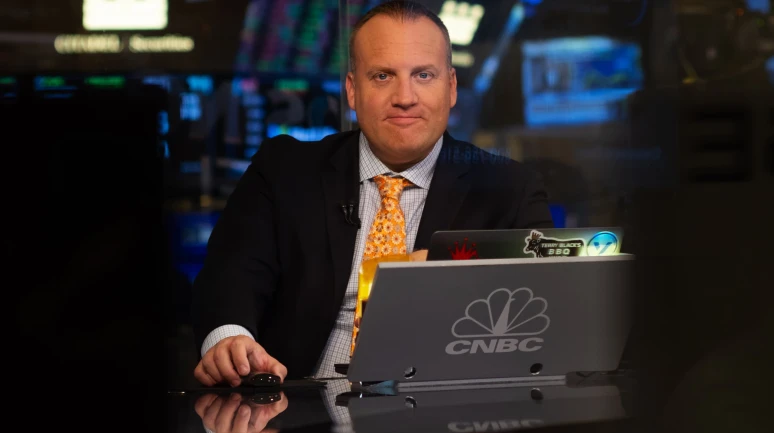Americans are increasingly turning to cash in the midst of market instability, leading to a record of $7.03 trillion in money market fund assets by the end of last week, as reported by the Investment Company Institute.
As the market turmoil continues, Americans are turning to cash as a safe haven for their investments. According to the Investment Company Institute, money market fund assets have surged to a record $7.03 trillion, reflecting a growing trend among investors. The recent uncertainty surrounding President Donald Trump's tariffs and their impact on the economy has led to a spike in volatility, prompting investors to seek stability in money market funds.
Significant Increase in Retail and Institutional Investments
Shelly Antoniewicz, the chief economist at ICI, attributes the increase in inflows to the current financial market conditions. With short-term interest rates remaining historically high, money market funds have become more appealing to both institutional and retail investors. Retail investors alone added $30.35 billion to money market funds, bringing their total assets to $2.84 trillion, while institutional funds saw a rise of $20.8 billion to $4.19 trillion.
During the week ending Wednesday, retail investors added $30.35 billion to money market funds, increasing their total assets to $2.84 trillion. On the other hand, institutional money market funds experienced a $20.8 billion rise in assets, reaching $4.19 trillion.
Yields and Attractiveness of Money Market Funds
Although yields on money market funds have decreased from their previous highs, they still offer an attractive option for investors. The current annualized seven-day yield on the Crane 100 list stands at 4.16%, making them a competitive choice.
The Shift Towards Money Markets and Away from Bank Deposits
Peter Crane, the founder of Crane Data, believes that the influx of funds into money markets is largely a result of investors moving away from lower-paying bank deposits. The recent turbulent conditions in the markets, triggered by uncertainties surrounding President Donald Trump's tariffs and their potential impact on the economy, have prompted a surge in cash investments.
Shelly Antoniewicz, the chief economist at ICI, attributes the significant inflows to the recent spike in financial market volatility. With short-term interest rates remaining historically high, money market funds have become more appealing to both institutional and retail investors as they pass on earned interest to their shareholders.
Advice on Cash Allocations
UBS advised investors to carefully monitor their cash allocations. Vince Heaney, a strategist, warned that rates on cash-equivalent assets could plummet in response to unexpected economic weaknesses. He emphasized the importance of seeking diverse and resilient sources of income within investment portfolios, especially amidst declining interest rates and potential economic risks.
Although yields on money market funds have decreased from their peak levels, they still offer an attractive option for investors. The annualized seven-day yield on the Crane 100 list of the largest taxable money funds stands at 4.16%. Peter Crane from Crane Data suggests that the shift towards money market funds is driven by a move away from lower-paying bank deposits.
Long-Term Performance of Cash vs. Other Asset Classes
Heaney highlighted that cash underperforms compared to other asset classes over extended periods. Stocks have outperformed cash in the majority of 10- and 20-year holding periods, while bonds have shown better performance over various timeframes, suggesting the need for a balanced approach to investment strategies.
While cash remains a crucial component of any investment portfolio, UBS emphasizes the importance of optimizing cash holdings. Vince Heaney, a strategist at UBS, warns that interest rates on cash-equivalent assets can decline rapidly in the face of unexpected economic data weakness. Investors are advised to diversify their sources of income and consider alternative options for portfolio growth.
Diversifying Income Sources
Investors can enhance their portfolio income by considering high-grade bonds, investment-grade bonds, private credit, senior loans, and equity income opportunities. Heaney recommended spreading exposure to higher-yielding fixed income options while managing associated risks.
UBS suggests that high-grade and investment-grade bonds present an attractive risk-reward opportunity for investors. Heaney projects medium-duration bonds to offer mid- to high-single-digit returns in U.S. dollar terms over the next 12 months. Additionally, spreading exposure to higher-yielding fixed income, private credit, senior loans, and equity income can help manage risks while enhancing portfolio income.
Exploring Alternatives to Cash
For those with a longer investment horizon, short-dated fixed income securities may provide better risk-adjusted returns compared to holding cash. UBS recommends exploring various income-boosting strategies to maximize portfolio growth and navigate the current market challenges effectively.
For investors with a longer investment horizon, short-dated fixed income assets could offer better risk-adjusted returns compared to cash. Heaney suggested exploring alternatives to traditional cash holdings to optimize portfolio performance.

























